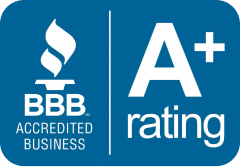Medicare Part A will increase by a small amount in 2023, while Medicare Part B and Medicare Advantage will decrease in price.
In addition, Medicare now provides free vaccines under Part D, and there is a new Part B benefit that extends coverage for anti-rejection drugs following a kidney transplant.
If you are new to Medicare or if you want to switch plans during an open enrollment period, being aware of these changes will help you choose the best Medicare plan for your needs.
- The price of Medicare Part A is on the rise.
- There has been a decline in the price of Medicare Part B.
- Adjustments to Medicare’s Part C
- Adaptations to Medicare’s Part D drug programme
- Adjustments to Enrollment in 2023Enrollment changes for 2023
Higher Medicare Part A costs
For 2023, the average increase in Medicare Part A costs is expected to be 3%, down from the 5% seen in 2020.
There will be an increase in the deductible, coinsurance, and premiums for Medicare Part A in 2023.
When a person reaches Medicare eligibility age (currently 65), they are automatically enrolled in Part A at no cost to them. However, if you have to pay for Part A, your premiums will likely go up every year.
Part A cost | 2022 amount | 2023 amount | % increase |
|---|---|---|---|
| Hospital deductible | $1,556 | $1,600 | 3% |
| Hospital coinsurance days 61-90 | $389 | $400 | 3% |
| Hospital coinsurance days 91+ | $778 | $800 | 3% |
| Skilled nursing facility coinsurance days 21-100 | $194.50 | $200 | 3% |
| Monthly rate: Paid Medicare taxes less than 30 quarters | $499 | $506 | 1% |
| Monthly rate: Paid Medicare taxes for 30-39 quarters | $274 | $278 | 1% |
If you have paid into Medicare for fewer than 40 quarters, you will not be required to pay a Part A premium.
Part A deductible
Each stay in the hospital will incur a separate Part A deductible. That figure will rise to $1,600 (a rise of $44) in 2023 from the $1,436 it was in 2022.
Part A premiums
If you have paid Medicare taxes for 10 years, Part A will continue to be free. Payments for Medicare Part A will increase to $506 per month in 2023 from $499 per month in 2022 if you have worked and paid Medicare taxes for fewer than 7.5 years. In 2023, the monthly cost of Medicare Part A will rise to $278 from $274 if you have paid Medicare taxes for between 7.5 and 10 years (30 to 39 quarters).
Part A coinsurance
A coinsurance amount is calculated for each day beyond 60 days spent in the hospital after the deductible has been met. There will be a 3% increase from 2022 to 2023 for both the deductible and coinsurance:
- Hospitalization days 1 to 60: If you haven’t met your $1,600 deductible yet, you’ll have to pay for that, but for the first 60 days in the hospital, you won’t have to pay any coinsurance.
- Hospitalization days 61 to 90: Cost per day for each period of benefits is $400, up from $389 in 2022.
- Hospitalization days 91 and up: Each “lifetime reserve day” for a given benefit period now costs $800, up from $778 in 2022. There is a lifetime cap of sixty reserve days for Medicare recipients.
Skilled nursing facility coinsurance
In 2023, the cost of staying in a skilled nursing facility for days 21–100 will increase to $200 from $194.50 per day in 2022.
The first 20 days in a nursing home are covered entirely by your insurance without any copayments or deductibles.
Changes to Medicare Part B
In 2023, Medicare Part B premiums and deductibles will decrease for all enrollees.
Monthly Medicare Part B premiums will drop from $170.10 in 2022 to $164.90 in 2023, a savings of $5.20.
In 2023, the deductible for Medicare Part B will also go down. In 2022, the annual Medicare Part B deductible will be $233; in 2023, it will drop to $226, a decrease of $7.
Part B cost | 2022 amount | 2023 amount | % decrease |
|---|---|---|---|
| Premiums | $170.10 | $164.90 | 3% |
| Annual deductible | $233 | $226 | 3% |
For those who have received a kidney transplant, Medicare’s new Part B coverage will roll out in 2023.
The benefit will extend coverage for drugs that help to keep your body from rejecting a donor kidney — known as immunosuppressive or anti-rejection drugs — beyond the current limit of 36 months.
This new plan only covers anti-rejection drugs, so it isn’t a substitute for full health insurance. Starting at $97.10 per month for those with annual incomes of $97,000 or less, the rate rises with income.
You can enrol by calling the Social Security Administration at 800-772-1213. TTY users can call 800-325-0788.
Medicare Advantage changes for 2023
Medicare Advantage premiums will decrease to $18 per month in 2023 from $19 per month in 2022.
The five largest Medicare Advantage insurers all intend to enter new markets that year. Aetna, Cigna, Elevance Health (formerly known as Anthem Inc.), Humana, and UnitedHealthcare may all offer new Medicare Advantage plans to consumers in the near future.
The cost and benefits of your prescription drug coverage under Medicare Part C (Medicare Advantage) or Part D will change significantly in 2023:
- Depending on the type of insulin you need, you won’t spend more than $35 monthly.
- The shingles vaccine, along with all other vaccines recommended by the Advisory Committee on Immunization Practices (ACIP), will be provided at no cost.
Medicare Part D changes
Prices for regular Medicare Part D plans are expected to drop from $32.08 per month in 2022 to $31.50 per month in 2023.
The rest of your Part D expenses will go up in 2023 as well. The maximum deductible for Medicare Part D will rise from $480 in 2022 to $505 in 2023. The amount of out-of-pocket spending required to enter the catastrophic coverage phase (after the donut hole phase and before the improvement in benefits) will increase from $7,050 in 2022 to $7,400 in 2023.
Part D cost | 2022 amount | 2023 amount | % change |
|---|---|---|---|
| Average monthly rate | $32.08 | $31.50 | -1% |
| Maximum annual deductible | $480 | $505 | +5% |
| Catastrophic phase threshold | $7,050 | $7,400 | +5% |
Limits on insulin costs
Select insulin products will be capped at $35 beginning January 1, 2023, across all Medicare Part D and Medicare Advantage plans that cover prescriptions.
As of now, a month’s supply of insulin will cost you no more than $35.
On July 1st, people with Type 1 Diabetes who are enrolled in Original Medicare and use an insulin pump will pay no more than $35 for a 30-day supply of insulin.
Vaccinations under Medicare Part D
The Medicare Part D vaccine coverage gap will be closed in 2023.
This includes the shingles vaccine, for which there is no deductible, coinsurance, or copayment under Medicare Part D.
Enrollment period changes for 2023
In 2023, Medicare will offer a special enrollment period for those who have experienced catastrophic life changes, such as a natural disaster or the loss of Medicaid coverage.
Existing enrollment periods have also been modified to allow you to begin receiving coverage sooner.
Extra time to sign up for Medicare through Dec. 30, 2022
Getting through to a Medicare enrollment specialist on the new Social Security Administration (SSA) phone system that went live in 2022 proved challenging for callers. If you called the Social Security Administration (SSA) between January 1 and December 30, 2022, but were unable to speak with a representative or were disconnected, you still have until December 30, 2022, to enrol in Medicare.
Whether you are applying during your IEP, the GEP, or a special enrollment period, you are eligible for the grace period (SEP).
Medicare.gov or (800) 772- 1213 are good resources for more information.
New special enrollment period
In 2023, there will be another special enrollment period for extenuating circumstances. If you are unable to enrol during the regular period because of factors such as a natural disaster, an emergency, incarceration, or the loss of Medicaid coverage, this option may help you.
The length of time you have to enrol is conditional on the uniqueness of your situation. Affected individuals have four months from the date of the disaster to select a Medicare Part C or Part D plan, cancel their current plan, or select a new plan. Any requested plan adjustments will take effect on the first of the following month.
Access Medicare.gov for details on eligibility and application deadlines.
Changes to existing Medicare enrollment periods
Medicare has modified the date coverage will begin for new enrollees during the initial enrollment period (IEP) and the general enrollment period (GEP) to help people avoid coverage gaps (GEP).
Enrollment period | 2022 rule | 2023 rule |
|---|---|---|
| Initial enrollment period | Those who enrolled in the IEP in its final month faced a two- to three-month wait before receiving coverage. | When you enrol in Medicare on or after your 65th birthday or during the remainder of the IEP, your coverage will begin the first of the month following your enrollment. |
| General enrollment period | Anyone who signed up for coverage during the GEP had coverage begin on July 1 of that year. | The first of the month following enrollment in the GEP is when coverage will begin. |
Seven months before and after your 65th birthday is the initial enrollment period (IEP). The GEP is a three-month window beginning in January and ending in March.
Frequently asked questions
What are some Medicare coverage changes for 2023?
For all Medicare Advantage and Medicare drug plans, the maximum out-of-pocket cost for certain insulin products will drop to $35 in 2023 under new Medicare regulations. Patients with ESRD now have access to an additional benefit that covers the cost of anti-rejection medication for up to an additional 36 months after receiving a kidney transplant.
How much will Medicare premiums change in 2023?
In 2023, Medicare Part B premiums will drop for the first time in nearly a decade, from $166.80 to $164.90. You can expect a 1% increase in your monthly premium if you have to enroll in Medicare Part A and start paying for it.
What is the Medicare deductible for 2023?
For the year 2023, the Medicare Part A deductible will be $1,600. Over the $1,556 deductible in 2022, this represents an increase of $44. In 2023, the Part B deductible will drop to $226 from the current $423.
Sources
Medicare costs, Medicare coverage, and Medicare benefits were all gathered from their respective government websites.








